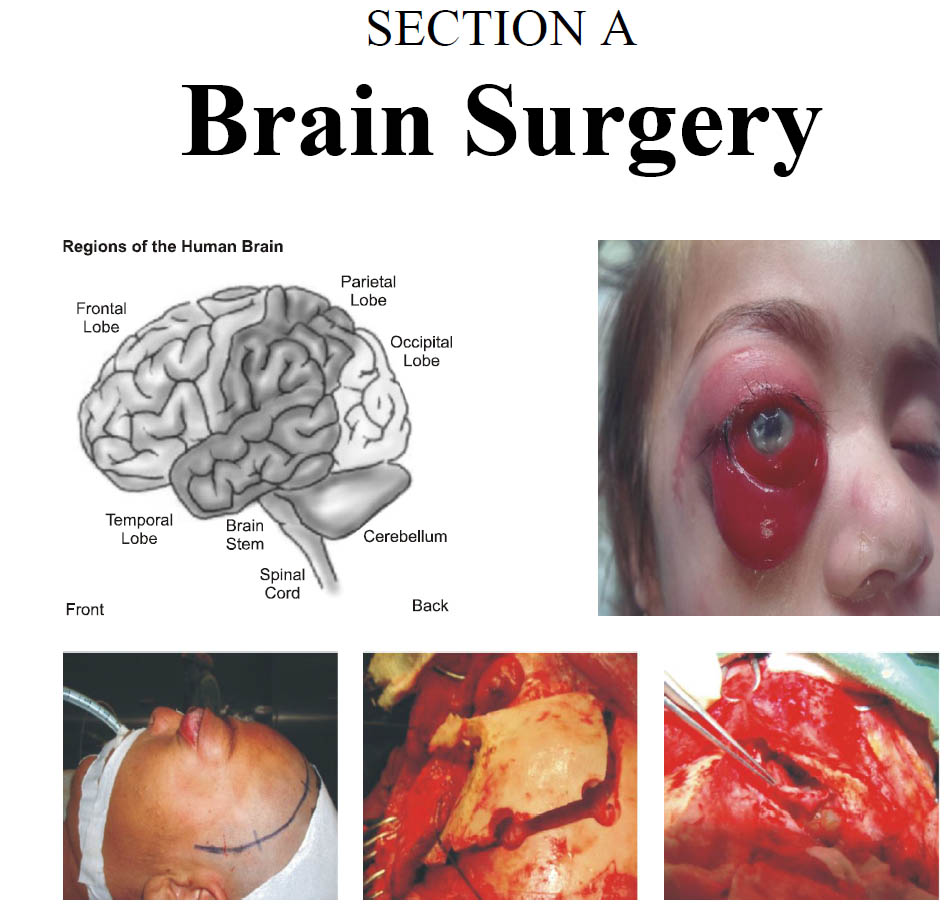Surgical Outcome of Organised Chronic Subdural Hematoma With Internal Septae in a Tertiary Care Hospital
Keywords:
Organized chronic subdural hematoma, MembranectomyAbstract
Objective: This study presented the surgical outcome of craniotomy and membranectomy (outer membrane excision) for the organized Chronic Subdural Hematoma (OCSDH) which have already developed thick internal septations.
Materials and Methods: We retrospectively reviewed a series of consecutive patients operated via.craniotomy method for OCSDH in Neurosurgery Department Hayat Abad Medical Complex. Patients with both genders and all ages diagnosed as OCSDH with septae either diagnosed preoperatively via imaging CT/MRI or intraoperatively while getting operated by single burhole drain or two burhole wash method were enrolled in the study and operated via craniotomy/outer membranectomy method. All data was recorded in pre-formed Performa and demographics, clinical data analysed to quantify outcomes statistically.
Results: Total 30 patients were operated in the 3 years study duration. Post-operative Recurrence of symptomatic hematoma was seen in only one patient, i.e. 3.33% and hence 29 (96.66%) had excellent outcome and remained symptom free at 6month followup visit. Out of 30 cases, we operated 27 (90%) were males and 3 (10%) were females, most of the cases were in the elderly age group (sixty five years was the mean age). Six cases (20%) had postoperative new onset seizures, all these patients were seizures free at 1month follow-up. Our three patients (10%) had a superficial wound infection.
Conclusion: Craniotomy and outer membranectomy is a safe procedure for the management of OCSDH offering good results and fewer/no recurrence, unless the adherent inner (cortical) membrane removal is attempted, which may result in new onset seizures and neurological deficits.
References
2. Ernestus R-I, Beldzinski P, Lanfermann H, Klug N.Chronic subdural hematoma: surgical treatment and outcome in 104 patients. Surg Neurol. 1997; 48: 220–5.
3. Markwalder TM. Chronic subdural hematomas: to drain or not to drain? Neurosurgery, 1985; 16: 185–8.
4. McKissock W, Richardson A, Bloom WH. Subdural hematoma: a review of 389 cases. Lancet, 1960; 1: 1365–9.
5. Putnam IJ, Cushing H. Chronic subdural hematoma. Its pathology, its relation to pachymeningitis hemorrhagica, and its surgical treatment. Arch Surg. 1925; 11: 329–93.
6. Robinson RG. Chronic subdural hematoma: surgical management in 133 patients. J Neurosurg. 1984; 61: 263–8.
7. Suzuki K, Sugita K, Akai T, Takahata T, Sonobe M, Takahashi S. Treatment of chronic subdural hematoma by closed-system drainage without irrigation. Surg Neurol. 1998; 50: 231–4.
8. Svien HJ, Gelety JE. On the surgical management of encapsulated subdural hematoma. A comparison of the results of membranectomy and simple evacuation. J Neurosurg. 1964; 21: 172–7.
9. Wakai S, Hashimoto K, Watanabe N, Inoh S, Ochiai C, Nagai M. Efficacy of closed-system drainage in treating chronic subdural hematoma: a prospective comparative study. Neurosurg. 1990; 26: 771–3.
10. Aoki N, Masuzawa H. Bilateral chronic subdural hematomas without communication between the hematoma cavities: treatment with unilateral subdural peritoneal shunt. Neurosurgery, 1988; 22: 911–3.
11. Arbit E, Patterson RH Jr, Fraser RAR. An implantable subdural drain for treatment of chronic subdural hematoma. Surg Neurol. 1981; 15: 175–7.
12. Harders A, Weigel K, Gilsbach J, Eggert MR. Follow-up and results of external drainage therapy of chronic subdural hematomas. Adv Neurosurg. 1981; 9: 388–90.
13. Laumer R, Schramm J, Leykauf K. Implantation of a reservoir for recurrent subdural hematoma drainage Neurosurgery, 1989; 25: 991–6.
14. Probst C. Peritoneal drainage of chronic subdural hematomas in older patients. J Neurosurg. 1984; 68: 908–11.
15. Tabaddor K, Shulman K. Definitive treatment of chronic subdural hematoma by twist-drill craniostomy and closed-system drainage. J Neurosurg. 1977; 46: 220–6.
16. Tyson G, Strachan WE, Newman P, et al. The role of craniectomy in the treatment chronic subdural hematomas. J Neurosurg. 1980; 52: 776–81.
17. Yashon D, White RJ, Bryk JH, Dakters JG. Simplified supplementary treatment of chronic subdural fluid collections. Neurochirurgia (Stuttg). 1971; 14: 8–13.
18. Gurunathan J: Treatment of chronic subdural hematoma with burr hole craniostomy and irrigation. Ind J Neurotrauma. 2005; 2: 127-30.
19. Lee KS: Natural history of chronic subdural hematoma. Brain Inj. 2004; 18 (4): 351-8.
20. Tokmak M, Iplikcioglu AC, Bek S, Gökduman CA, Erdal M: The role of exudation in chronic subdual hematomas. J Neurosurg. 2007; 107 (2): 290-95.
21. Yamashima T, Yamamoto S, Friede RL: The role of endothelial gap junctions in the enlargement of chronic subdural hematomas. J Neurosurg. 1983, 59 (2): 298-303.
22. Rehman RU, Noman MA, Ayoob S, Shah M, Mushtaq, Nabi A. “Optimum management of chronic subdural hematoma:evaluation of various surgical options for the treatment of chronic subdural hematoma.” KJMS, 2014; 7 (2): 161-65. 23. Firsching R, Frowein RA, Thun F: Encapsulated subdural hematoma. Neurosurg Rev. 1989; 12 (Suppl. 1): 207-14.
24. Svien HJ, Gelety JE: On the surgical management of encapsulated subdural hematoma. A comparison of the results of membranectomy and simple evacuation. J Neurosurg. 1964; 21: 172-7.
25. Ali M, Khan Z, Sharafat S, Khan KM.” Craniotomy for encapsulated chronic subdural haematoma” PAJN. 2011; 15 (2): 12-14.

Downloads
Published
Issue
Section
License
The work published by PJNS is licensed under a Creative Commons Attribution-NonCommercial 4.0 International (CC BY-NC 4.0). Copyrights on any open access article published by Pakistan Journal of Neurological Surgery are retained by the author(s).












